The Vera C. Rubin Observatory (previously named the Large Synoptic Survey Telescope) will soon begin the ten-year Legacy Survey of Space and Time (LSST), imaging billions of celestial objects in six colors and Materion Precision Optics is on board. Rubin Observatory will image the entire visible sky, returning to the same area every 3-4 nights, and will provide the first time-lapse view of our Universe.
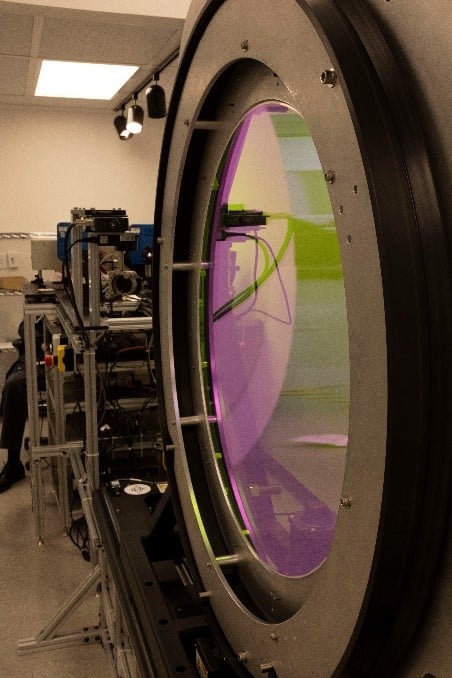
For Materion, the project began in 2011 with the early design phase leading into the construction phase in 2014, the telescope is scheduled to go online in 2023. The various components of the Rubin Observatory system are currently in development: a large-aperture, wide-field, optical imaging telescope; a 3200-megapixel camera; a data management system; and an online, interactive public engagement platform. Financial support for Rubin Observatory comes from the U.S. National Science Foundation, the U.S. Department of Energy, and private funding raised by the LSST Corporation.
Materion Precision Optics coated the LSST Camera’s 6 filters, which range from UV to near-IR in the electromagnetic spectrum, u, g, r, i, z, and y-bands. The curved filters are the largest precision filters of their kind, measuring about 30 inches (76 cm) and weighing about 90 lbs (41kg). On March 12th, Lawrence Livermore National Laboratory (LLNL) delivered the first completed filter, the r band filter, to the camera integrator at SLAC National Accelerator Laboratory. Materion has now delivered four of the six band filters, with the remaining 2, the g band and the u band currently under construction.
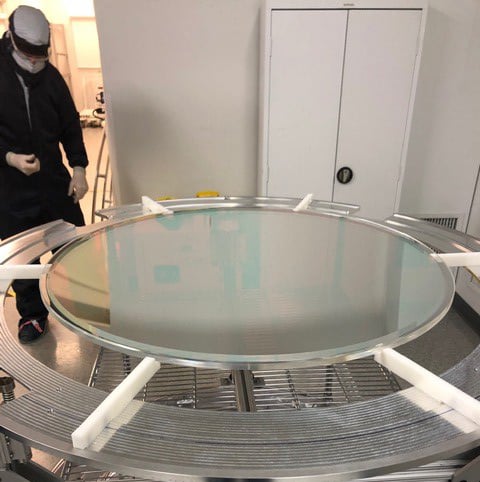
The r band filter has traveled to a variety of places before its delivery in Chile. The substrate’s raw material was procured in New York State, was shipped to Aix-en-Provence, France, where it was shaped and polished. From France it traveled to Materion in Westford, Massachusetts, where it was coated and tested. The value of Materion coating the substrate material on each of these one-of-a-kind bands is “priceless” and represents a key enabling technology for the broadband spectral mapping planned by the Rubin Observatory.
From Westford, the filter traveled to the LLNL in California to be installed in its frame, and finally the finished filter was sent to SLAC, in Menlo Park, CA where it will be stored in a special container until the rest of the filters arrive. The installation and testing of all the filters in the filter exchanger are expected to take place at the end of 2021 and finally shipped to Chile in early 2022.
We are no stranger to the field of astronomy, designing and coating optics for almost 50 years. However, this is the largest precision curved bandpass filter on any optic that our team has ever produced. The design and measurement of these filters is complicated by the unique design of the telescope and its large central obscuration which results in the filters’ use at non-normal incidence with a cone extending from 13 to 24°. To satisfy the needs of this project we have developed a custom large dual beam spectrometer capable of illuminating the finished filter at any location in the clear aperture over the range of measurements
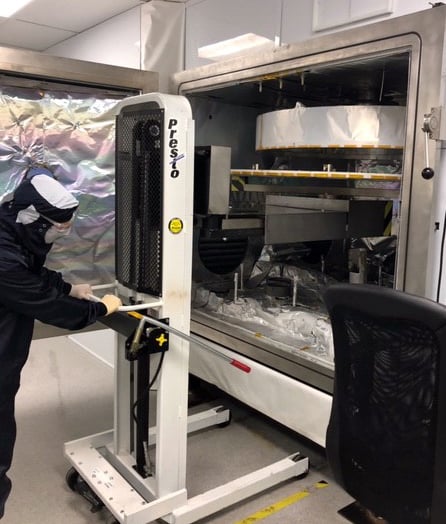
The team also developed software to automate the test system to perform all measurements and data analysis required to meet the specifications. The system maps the filters’ performance at 159 locations and 5 angles between 13° and 24° and then calculates the area weighted angle and weighted transmittance which is shown below. The dotted curves on the left are the theoretical designs for the two uncoated optics that remain.
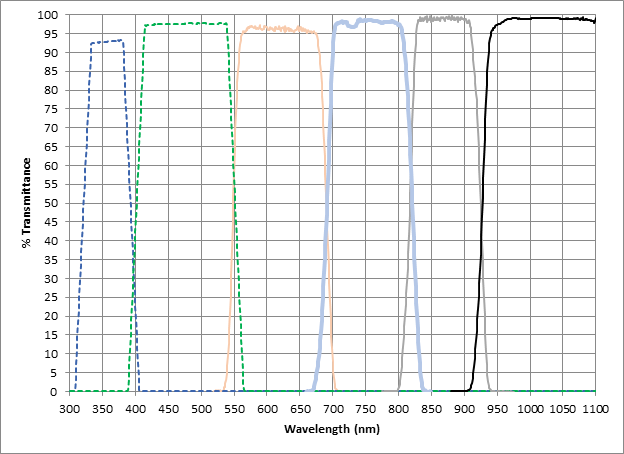
“The engineering team have gone above and beyond in supporting the success of coating these large optics,” said Mike Reedy, Vice President/General Manager, Optics in Westford, MA. Additionally, infrastructure along with some custom tooling, mechanical lifts, and a state-of-the-art new washing and inspection station were added in a cleanroom adjacent to the deposition system.
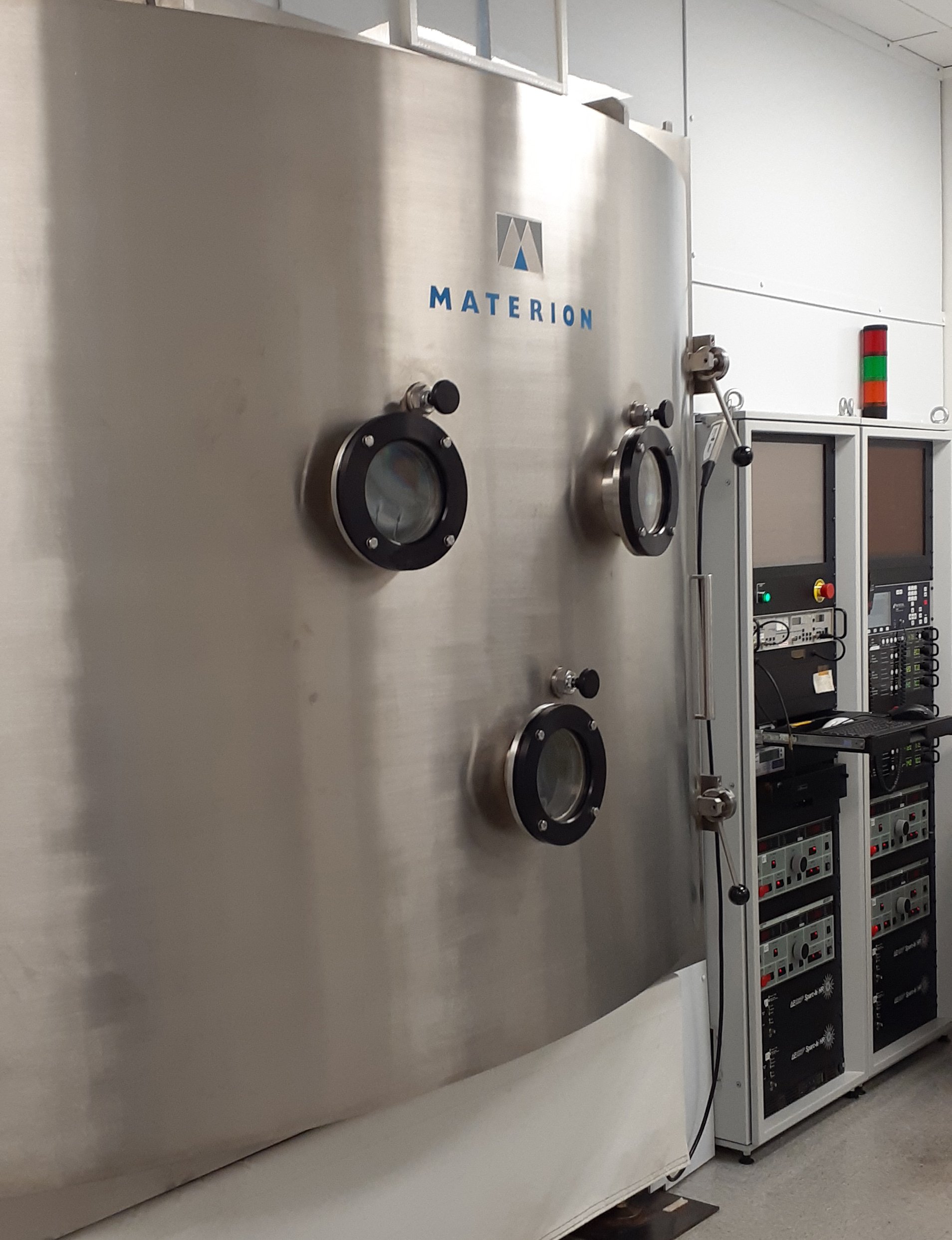
“We are very excited and proud to be part of the Rubin Observatory project, which is different from other ground-based telescopes in that it will create an exceptionally wide field of view, and has the ability to survey the entire visible sky in only three nights,” Reedy said.
Since the 1970s, Materion has been supporting major U.S. and international space and astronomy missions. It’s exciting to look back at how the spirit of innovation that drives us today has played such a crucial role over the years in the advancement of space technologies and programs. Materion’s proud legacy of large area optics can be found on many ground-based astronomical instruments including Gemini Observatory, Southern African Large Telescope (SALT), Keck Observatory, National Astronomical Observatory of Japan, and University of Hawaii Institute for Astronomy (PanStarrs camera).